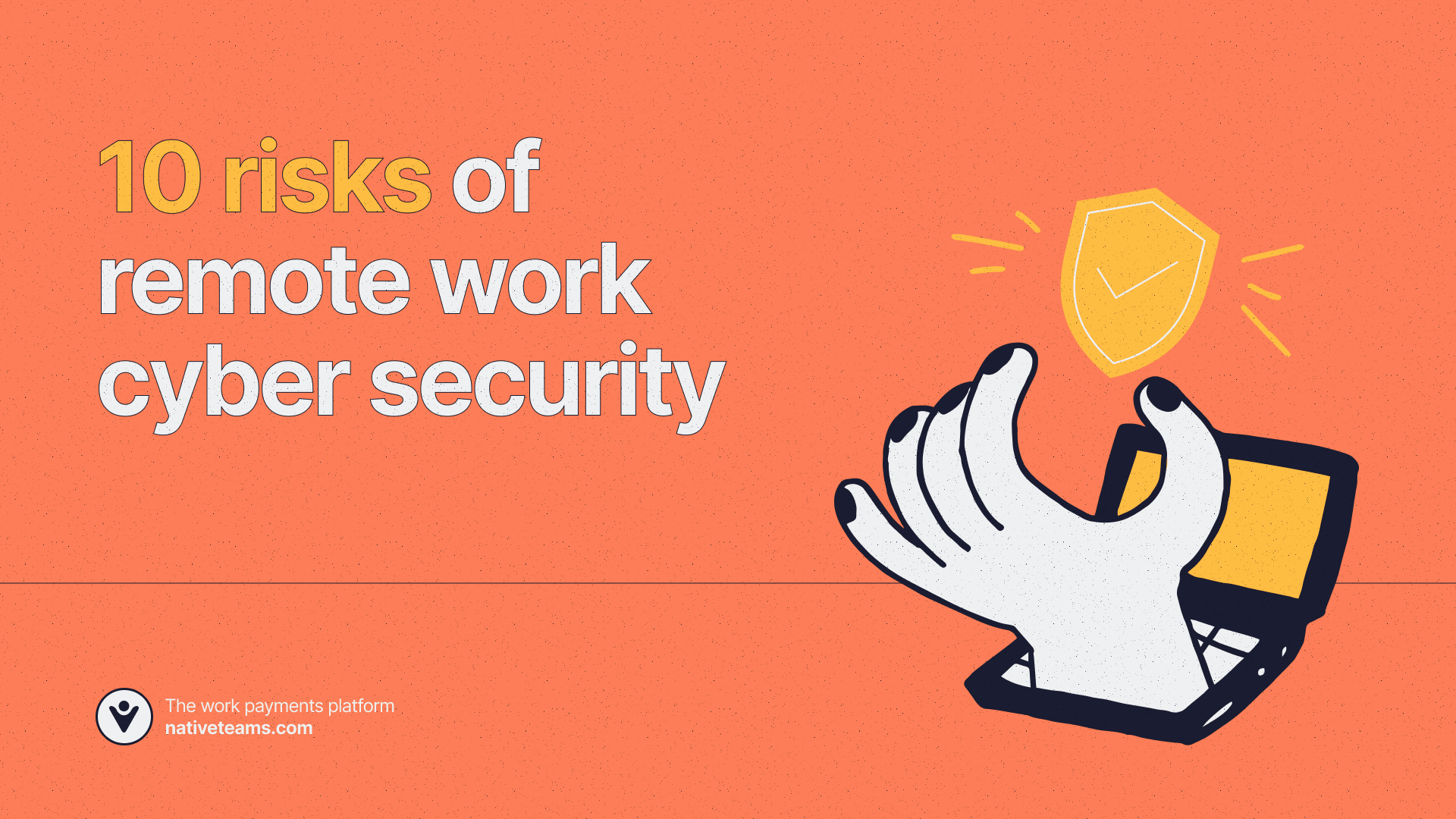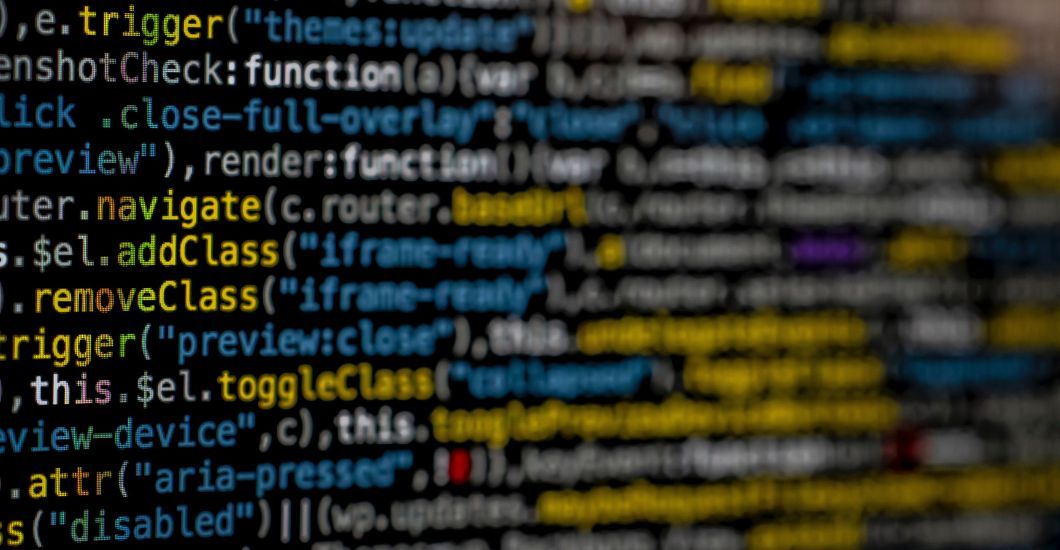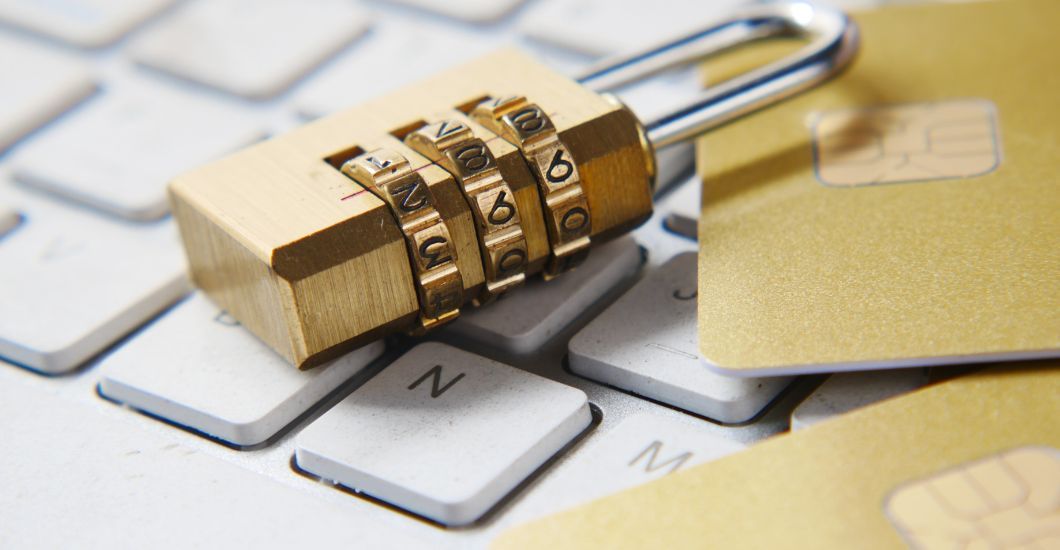10 Risks of Remote Work Cyber Security
The trend toward hiring remote workers is growing in popularity among companies. Workers are happier and more productive when they have the option to do so, and the cost-savings and reduction in the need for traditional office space are additional benefits of remote work.
However, this rising trend of remote workers is also leading to a rise in risks and breaches as more and more people use unsecured networks to get their jobs done. In addition, you and your staff need to be ready to deal with cyber threats to keep your business running smoothly.
Keep reading this blog if you’re interested in learning more about remote work cyber security and how to safeguard your business from cyber threats.

What is remote work security?
The area of cybersecurity known as “remote work security” is devoted to guarding company information and other assets when employees perform their duties away from an actual office.
In addition, remote work security protects sensitive applications and maintains appropriate application performance. To meet remote employees’ needs for accessibility and performance, it is necessary to keep several security risks at bay.
As a result, businesses need to start considering more cutting-edge strategies, such as investing in identity-centric services and a zero-trust model to better defend against these regular attacks and ensure the safety of their remote workers.
Why is cyber security important for remote employees?
There are several reasons why cyber safety is crucial for remote workers. First, it’s important to remember that remote workers frequently deal with sensitive data and information. This information is highly vulnerable and may seriously damage the company or an individual if it falls into the wrong hands.
Second, remote workers frequently use their own devices to gain access to internal company resources. A data leak may occur if these gadgets are not protected adequately.
To cap it all off, it might be challenging to coordinate security upgrades and patch management among remote personnel because they are often operating in various time zones. However, businesses may ensure the safety of their data and personnel from any place by employing stringent cyber security measures that mitigate data security risks.
How does remote work impact cyber security?
Thanks to technological advancements, more people may now work remotely from their homes, local coffee shops, shared office spaces, or any place with an internet connection. As a result, a profound change in how we approach safety issues has occurred.
In addition, companies’ primary focus used to be on physical security or the prevention of unauthorized entry to their buildings, assets, and employees. However, when workers are no longer confined to a single site, this protection is no longer adequate.
As a result, now more than ever, businesses need to consider how to safeguard their information and infrastructure from cyberattacks, regardless of their employees’ locations.
10 Common remote working cyber security risks
The working remotely trend is on the rise, with more and more companies allowing employees to telecommute. But while there are many advantages to remote work, there are also some serious risks when it comes to cyber security.
In this section, we’ll discuss 10 of the biggest concerns about remote workers’ security, so stay tuned!
1. Unsecure hardware
A hardware vulnerability is a security flaw that allows an adversary to compromise a system by exploiting a weakness in the hardware itself.
In addition, hackers can gain access to the systems of remote workers because they use smartphones and other portable devices while on the job.
When computers and other gadgets aren’t shielded, hackers can plant viruses on them. However, this problem can be avoided by implementing hardware security keys, eliminating the possibility of password compromise due to hardware flaws.
2. Weak passwords
One of the most common ways for hackers to access user accounts is through using passwords that are either simple to guess or otherwise inadequate.
Hackers will try to break into user accounts because they know that doing so is much simpler than getting over a cutting-edge security system, making a self hosted password manager a smart first line of defense. Additionally, adopting modern authentication options such as the Amazon passkey can greatly reduce reliance on weak or reused passwords.
Using the same password for many accounts is another common risky practice employed by fraudsters. After gaining access to one account, they will try to utilize that access to gain access to other’s accounts.
3. Insecure wireless networks
It is crucial to use only secured Wi-Fi networks when working remotely. Unfortunately, many public Wi-Fi hotspots are not encrypted, making them vulnerable to cyber-attacks.
In addition, to protect your data while you’re online, it’s best to utilize a VPN service when connecting to a public Wi-Fi network.
Also, hiding the Wi-Fi network name can be a safer alternative for remote workers in urban regions with many Wi-Fi networks.
4. Phishing attacks
Cyber security threats like phishing attacks are prevalent, and they can have a disproportionate impact on organizations with remote employees. Email and phishing scams are becoming more sophisticated, affecting a large number of employees around the world.
Most commonly, victims are tricked into divulging personal information, bank account details, or even large sums of money by clicking on links in seemingly official-looking emails or responding to them. Using a link checker tool before clicking can help identify malicious URLs and prevent these types of attacks.
Even though software exists to help spot and delete phishing emails, some still get through. In addition, workers are vulnerable to this attack if they aren’t using up-to-date malware filters.
5. Transmitting unencrypted files
While many businesses ensure that no data is compromised while stored on a network or server, files transmitted from one employee to another may still be vulnerable if they are not encrypted.
Because of this, hackers may gain access to sensitive customer information and use it for illicit purposes, including extortion, identity theft, and ransomware.
While most businesses understand the need to safeguard data at rest within their network, they may overlook the importance of doing the same while it is in transit.

6. Social engineering attacks
In order to get access to private information or computer networks, social engineers will often resort to deceptive techniques, playing on people’s natural inclinations.
An attacker could send an email pretending to be an IT member and ask for your password so they can “correct an issue” with your account.
They may also contact and appear to be from customer support, asking for personal information or credit card details to “check your identity.” Be wary of such assaults and avoid sharing personal information or login credentials with anyone unless you are certain it is safe to do so.
7. Insider threats
Cyber security dangers typically originate from the outside, but insider threats are also a concern. The term “insider threat” refers to a situation in which a user with authorized access to your system does an illegal action.
They may steal private information or install malicious software. Since the insider in question has valid access to the system, stopping them is often challenging.
Nonetheless, there are measures you can take, such as keeping an eye on user behavior and enforcing stringent access rules.
8. Remote desktop protocol (RDP) attacks
With workers dispersed throughout the globe, businesses lose oversight and control of their employees’ private information.
GDPR requires companies to take precautions to safeguard personal data and lessen the likelihood of data breaches, but this can be difficult to implement for remote workers.
To maintain compliance with GDPR, mitigate risk, and secure sensitive information, businesses need a solid remote work policy detailing the company’s access management approach.
For example, who may access the company’s servers, what information they can access, and how they can use it should all be spelled down.
9. Unsecured home gadgets’ risks
The majority of the time, workers who work remotely connect to the corporate network using their personal devices. Corporate computers and printers are rarely provided, which might lead to security flaws and vulnerabilities.
In general, home computers are less secure than those used in businesses. Therefore, the security tools that most employees take for granted, such as firewalls, and email filtering, might not be available, and corporate security staff won’t have any control over what’s happening.
Corporate networks would be vulnerable to attack from hackers who might use these personal devices as access points if this additional security wasn’t present.
10. Neglecting public safety measures
While protecting your company’s data from cyber threats is a top priority, we also need to ensure its physical safety.
Employees may be disruptive in some ways, including making loud phone calls in public, leaving their laptop screens exposed for all to see in a café, and leaving their devices unattended.
Even if it seems obvious that employees should practice certain safety precautions, businesses should still train them on them, including basic digital hygiene. For example, if you're a Mac user, uninstalling old Mac updates can help minimize unnecessary exposure to vulnerabilities.
In addition, it’s always helpful to send a friendly reminder to employees to keep company information secure.
Best practices for remote working cyber security
It’s no secret that for many of us, working from home has replaced traditional office hours. And while working remotely has many benefits, it also has some significant threats to your cyber security. Therefore, when working remotely, it’s vital that you understand the risks associated with cyberspace and take precautions against them.
Here are some of the best practices for remote working cyber security:
- Be cautious about email attachments: Email attachments are a typical vector for hackers to disseminate malware; therefore, it’s essential to exercise caution while opening them. Don’t just blindly open attachments in emails, especially if they do not come from someone you know;
- Use caution when working on public Wi-Fi: Don’t do anything sensitive while using a public Wi-Fi connection. Always use a virtual private network (VPN) and other security measures to keep your data safe when connecting to public Wi-Fi. Understanding what Virtual Private Networks are and how they encrypt your internet traffic can help you better appreciate their role in protecting your privacy;
- Back-up your data: It is essential for anybody who uses a computer, but especially for remote workers, to back up their data regularly. If your computer is hacked, you will be relieved to have a copy of your data stored elsewhere;
- Use strong passwords: Passwords should be unique and complex, including upper- and lowercase letters, numbers, and symbols. You should not use your name or a simple word like “password” as your password;
- Keep an eye out for suspicious activity: Any suspicious behavior on your system or network should be investigated further since it may indicate an ongoing attack. Immediately notify the IT department or security team of any questionable activity.
- Leverage SOC automation for security monitoring: Implementing SOC automation best practices can significantly enhance remote work security. Automated Security Operations Center (SOC) tools help detect threats in real time, analyze unusual activity, and respond to cyber risks quickly.
- Implement AI guardrails: AI-powered tools can be prone to vulnerabilities if not properly managed. To prevent unintended security breaches, implementing AI guardrails helps ensure AI systems operate within predefined security boundaries, reducing the risk of AI bypassing essential protections.

Final thoughts
Those in charge of a remote workforce must regularly check in with their staff to reinforce the necessity of preventing cyberattacks. Hackers and data breaches are a real danger, yet most people assume that they primarily affect large corporations.
However, because they lack the same security routine as a large organization, small businesses and remote workers are often the primary targets of a security breach.
Therefore, before beginning any activities, every remote worker or team should first focus on establishing a solid cybersecurity protocol.
